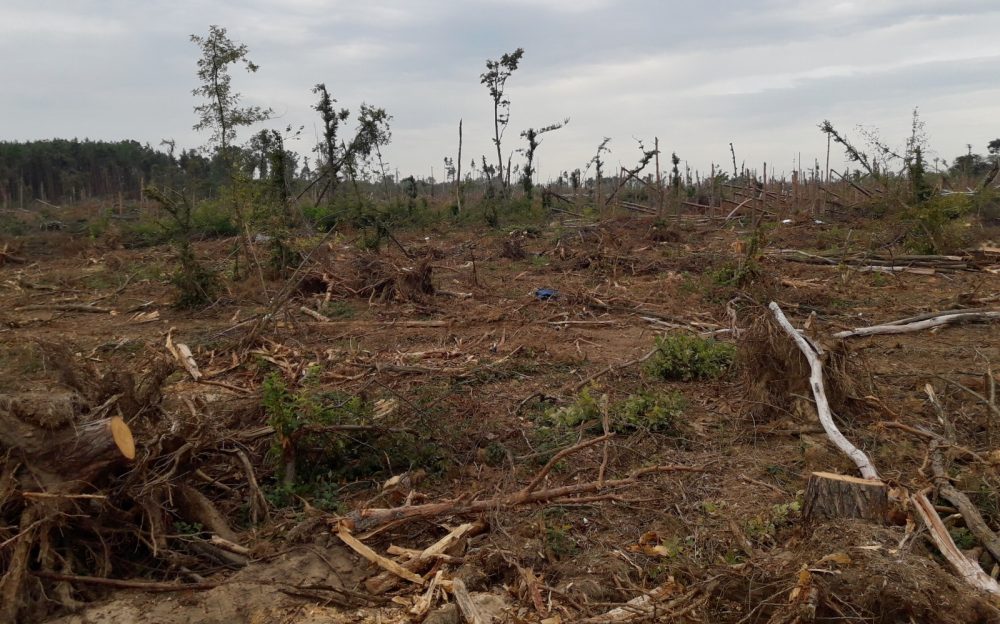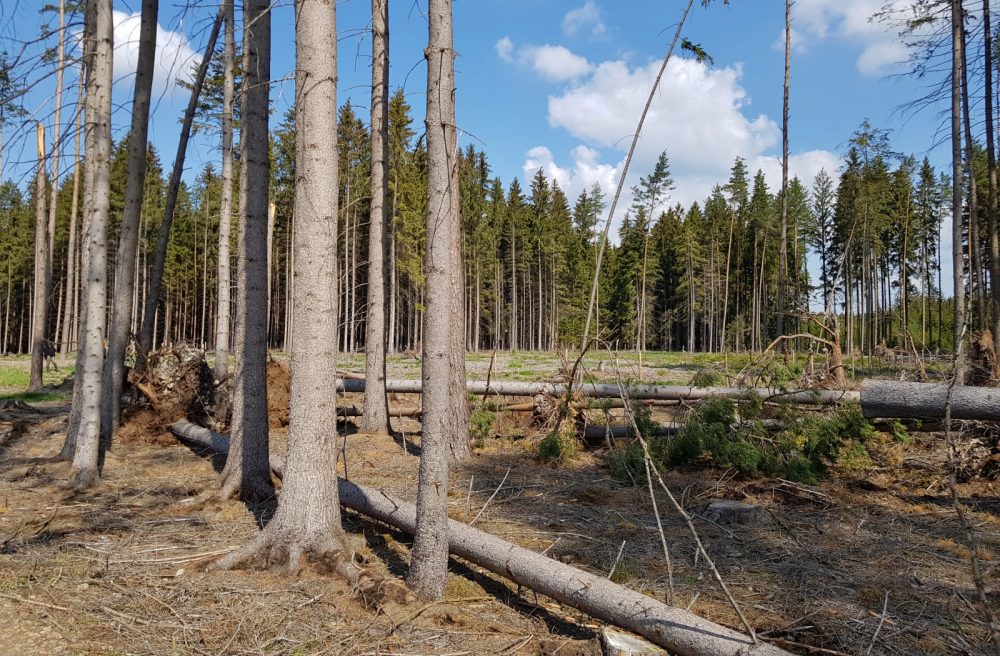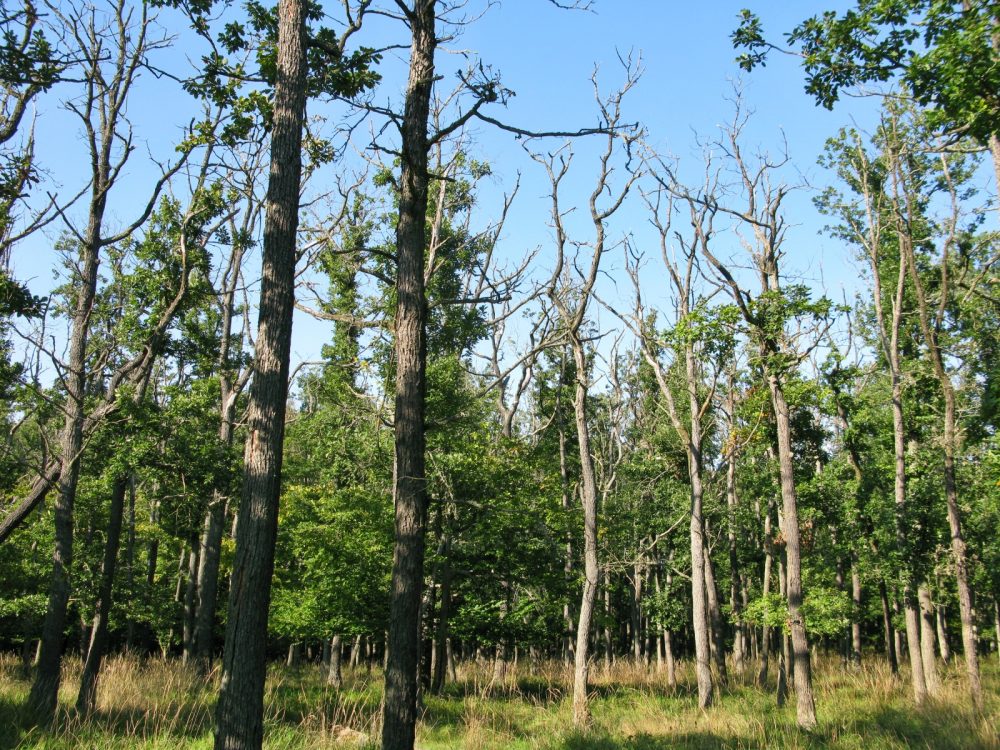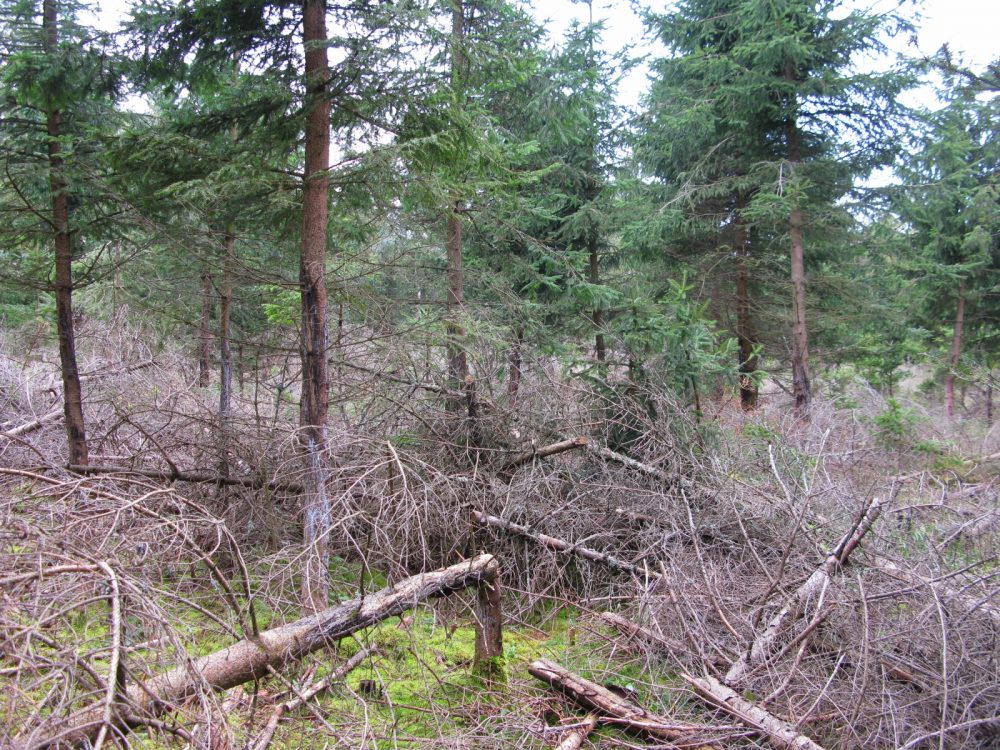Forests are damaged by wind, drought and snow
Climatic extremes and the resulting floods, drought, wind (tornadoes), including snow and frost, used to be, in addition to insects, also the causes of relatively extensive damage to our forests. Nevertheless, compared to 2020, in 2021 there was a decrease in forest damage due to abiotic influences by about 30%, similar to damage by insects and fungi. According to the records sent by the owners and managers of the forest to the Forest Protection Service, in 2021 the total volume of accidental logging reached 13.8 million m3, of which 30% (4.1 million m3) have been caused by abiotic influences, and 70% (9.7 million m3) by biotic influences.
(Report on the Occurrence of Harmful Factors in the Forests of the Czech Republic for the year 2021, this is the source of the presented information. Such reports are processed annually by the Forest Protection Service (LOS), VÚLHM, v. v. i. Forest practice reports are the main background for these reports. In 2021, these reports covered 67% of the total forest area. All data represent sums from reports sent by forest owners to the Forest Protection Service. The data cover two thirds (66.6%) of the forest area in the Czech Republic. It is therefore not a recalculation for the entire territory of the Czech Republic. )
The year 2021 ranks among the seven warmest years on history (all seven years belong to the period 2015–2021). A number of extremes have been recorded around the world, such as heat waves in British Columbia, unusually cold weather in Mexico, heavy rains and floods in Europe. In Belgium and Germany, there extreme rainfall and landslides caused enormous damage and losses of more than 200 lives.
 Photo: Calamity areas after processing of forest stands damages caused by a tornado in the Hodonín region, VÚLHM archive
Photo: Calamity areas after processing of forest stands damages caused by a tornado in the Hodonín region, VÚLHM archive
In the Czech Republic, the year 2021 was characterized by a relatively long-lasting snow cover, even in central locations and by both sufficient precipitation and low temperatures in the spring. In terms of temperature and precipitation, the year 2021 was normal in the Czech Republic. From the point of view of the forest stands development and especially from the point of view of the influence of the weather on the bark beetle calamity mitigation, that year can be considered as favourable.
In the opposite, the period of strong storms during June and July was very dramatic. In that time, even the tornado practically destroyed parts of several villages in the Hodonín region, and also brought loss of human life, unfortunately. Just because of a series of storms accompanied by strong winds, hail and local floods, the year 2021 was the most expensive in terms of natural insurance events since the creation of the independent Czech Republic – the total insured losses were calculated at 5.77 billion CZK.
According to the records sent by the forest owners and managers to the Forest Protection Service, in the year 2021 the total volume of accidental logging reached 13.8 million m3, of which abiotic influences presented 30% (4.1 million m3) and biotic influences 70% (9.7 million m3). In 2020, a total of 19.8 million m3 of incidental logging was reported from an area comprising 68% of the forest. Between years 2020 and 2021, there was a decrease of about 30%.
 Photo: Windbreak in the Vysočina Highlands, VÚLHM archive
Photo: Windbreak in the Vysočina Highlands, VÚLHM archive
For the state of the forest, the years 2020 and 2021 were more favourable, especially in terms of temperatures and precipitation. This alleviated drought stress, but forest stands weakened by the long dry 2015–2019 period are still withering, and this is reflected in the volume and proportion of timber recorded as drought damage by forest owners.
The total volume of incidental logging reported by forest owners as a result of damage caused by all abiotic influences was 4.1 million m3 in 2021 (2020: 4.4 million m3; 2019: 4.42 million m3; 2018: 6.4 million m3).
Wind damage achieved the highest proportion among abiotic factors – 2021: 2.31 million m3 (57% of total abiotic damage), 2020: 2.69 million m3; 2019: 2.57 million m3; 2018: 4.62 million m3.
In 2021, the drought damaged 1.56 million m3 of wood (38%); (2020: 1.54 million m3; 2019: 1.29 million m3; 2018: 1.62 million m3). Not only Norway spruce suffers from drought, but also pine, oak and other types of forest trees.
In 2021, 130 thousand m3 of wood were damaged by snow; (2020: 119 thousand m3; 2019: 507 thousand m3; 2018: 49 thousand m3).
 Photo: Withering and dying oak stand, primarily damaged by long-term drought, VÚLHM archive
Photo: Withering and dying oak stand, primarily damaged by long-term drought, VÚLHM archive
In 2021, when assessing accidental abiotic harvesting by regions, the most damaged wood was reported from the Vysočina (Highlands) region (723 thousand m3), the second position was recorded for the Central Bohemian region (641 thousand m3) and the South Bohemian region (524 thousand m3) was the third one. The Vysočina region and the South Bohemian regions Vysočina (Highlands) and South Bohemia region were also among the most affected regions in 2020 (Vysočina 2020: 586 thousand m3; 2019: 447 thousand m3; South Bohemia Region 2020: 672 thousand m3; 2019: 497 thousand m3).
The unfavourable situation was also recorded in the South Moravian region (2021: 518 thousand m3; 2020: 691 thousand m3; 2019: 568 thousand m3).
The volume of abiotic incidental logging in these four regions (Vysočina Highlands, Central Bohemia, South Bohemia and South Moravia regions) accounted for 59% (2.41 million m3) of all reported abiotic damages for the year 2021 (4.1 million m3), according to the reports received.
In the other regions, the volumes of abiotic incidental logging were significantly lower – in the regions of Olomouc, Plzeň, Pardubice and Moravskoslezský ranged among 217-258 thousand. m3, in the Karlovy Vary, Zlín, Královéhradecky and Liberec regions it was 116–184 thousand. m3. In the Ústí region, it was only 87,000. m3.
 Photo: Decayed young spruce stand, damaged by a ungulate game, with secondary infection caused by fungi Stereum sanguinolentum and finally broken by wet snow, VÚLHM archive
Photo: Decayed young spruce stand, damaged by a ungulate game, with secondary infection caused by fungi Stereum sanguinolentum and finally broken by wet snow, VÚLHM archive
The situation has been unfavourable for several years, especially in the regions of South Moravia, South Bohemia and Vysočina Highlands. In the records, the Moravian-Silesian region was replaced in the leading positions by the Central Bohemian region. The reason why is the fact, that a significant part of the forest stands in northern Moravia has already been cut down.
In 2021, the highest wind damages were recorded for the South Bohemian region (474 thousand m3, 2020: 626 thousand m3; 2019: 371 thousand m3). Further in the Vysočina region (217 thousand m3, 2020: 257 thousand m3; 2019: 172 thousand m3). More than 200 thousand m3 of wind-damaged wood for 2021 was also reported from the Central Bohemia region (236 thousand m3) and Plzeň region (210 thousand m3).
Drought damage for the year 2021 was the highest in the Vysočina Highlands region (approx. 390 thousand m3), the Central Bohemia region (369 thousand m3) and the South Moravian region (352 thousand m3). The South Moravian region has been heavily affected for several years (2020: 508 thousand m3; 2019: 460 thousand m3).
The volume of wood damaged by drought in these three regions represents 71% of the total volume of wood damaged by drought for the year 2021. This indicates that the calamitous effect of the drought has moved from North Moravia to South Moravia, and from there the situation worsens towards the west, through Vysočina Highlands to the Central Bohemia.
This is difficult, to estimate the development for the year 2022, rather still high volumes of incidental logging can be expected. Thus less space for targeted cultivation of forest stands can be expected, too. As a new challenge, it is the care of large areas of regenerated stands, which were harvested mainly in the last five years.
You can find more information on the state of forest health in the Forest Protection Bulletin, Supplement 2022, which can be downloaded here.
The publication was prepared by an authors‘collective VÚLHM, v. v. i.
Prepared by Ing. Jan Řezáč, VÚLHM, v. v. i., e-mail: rezac@vulhm.cz
